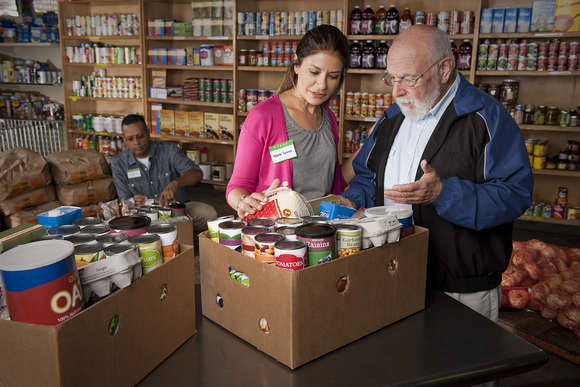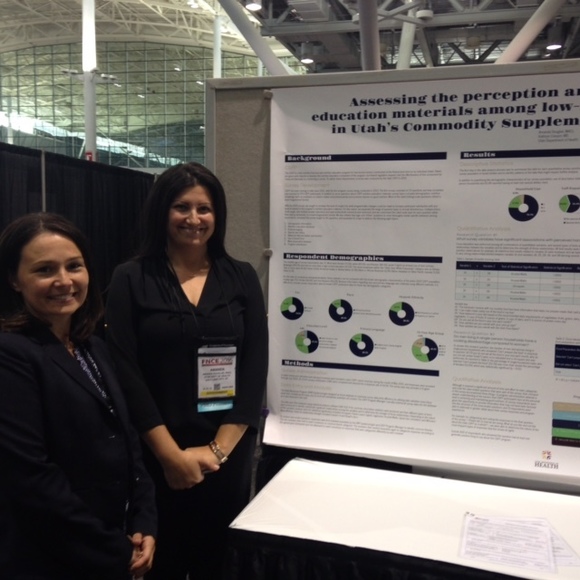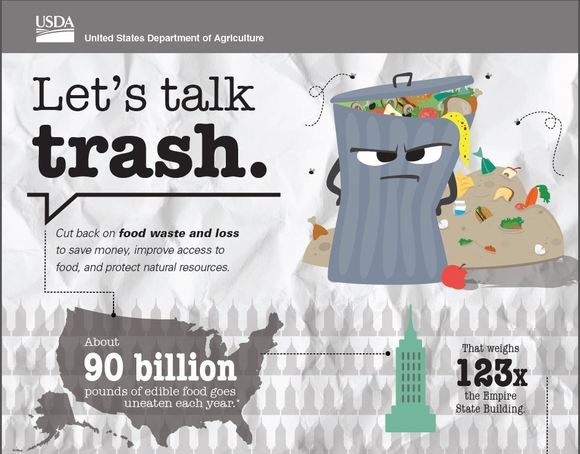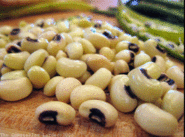CSFP
Food Package Review
During
Fiscal Year (FY) 2017, USDA will conduct a comprehensive review of the Commodity Supplemental Food Program (CSFP) food
package. The food package review will include a nutrition assessment of
the food package as currently offered, taking into account recommendations in
the 2015-2020 Dietary Guidelines for Americans and the preferences and
distinct nutritional needs of CSFP’s senior participants. A workgroup
comprised of members from CSFP State and local agencies and USDA National and
Regional Offices will contribute towards a food package assessment and develop
recommendations for potential food package updates. Other members of the
program community will also have an opportunity to provide input on the food
package at the 2017 National CSFP Association Conference in New Orleans in
March. Given CSFP's transition into a program exclusively serving
seniors, it is an opportune time to evaluate and update the USDA Foods offered
in the CSFP food package, and we are excited to see the end result of this
important initiative!

Utah CSFP Customer
Survey
The Utah Department of Health is taking a scientific
approach to meeting the CSFP requirement (CFR
247.18) that State agencies establish an
overall nutrition education plan which includes an evaluation procedure to
ensure that the nutrition education provided is effective. Utah’s program
created a survey assessing the impact and influence of nutrition education in
their CSFP. The survey asks CSFP participants a variety of questions to find
out if they are using the nutrition education provided in their monthly food
box and whether the materials influence their use of the food. The initial
survey will serve as a baseline of client nutrition knowledge and behavior and
maximize the continued effectiveness of the nutrition component of Utah’s
CSFP. The survey results found a statistically significant and moderate to
strong association between respondents’ perception of the nutrition education
materials’ helpfulness and ability to make meals solely out of the food they
receive in the CSFP food box, the ability to maximize the food they receive,
balanced diet status and overall program satisfaction. So what’s the bottom
line? Utah’s CSFP nutrition education seems to be having a positive impact on
their program.
Utah’s CSFP survey was recently recognized by the Journal of
the Academy of Nutrition and Dietetics and featured as a poster session exhibit
at the Academy’s 2016 Food and Nutrition Conference and Expo in Boston. Below
is a photo of the poster presentation and Amanda Douglas (on the right), Utah CSFP program
coordinator.
The
publication is available online in the Journal of the Academy of Nutrition and
Dietetics: http://www.andjrnl.org/article/S2212-2672(16)30430-0/abstract
"Assessing
the Perception and Influence of Nutrition Education Materials
among Low-income Seniors Participating in Utah’s Commodity Supplemental
Food Program (CSFP)." Douglas, A. et al. Journal of the Academy of Nutrition and
Dietetics, Volume 116, Issue 9, A11.

 New Foods Added to TEFAP Foods Available List
Six new items are available to order in The Emergency Food Assistance Program (TEFAP)
entitlement catalog.
|
 The first four products are familiar because we offer them in CSFP and/or the Food Distribution Program on Indian Reservations (FDPIR). The fifth and sixth items, frozen carrots and peas in 2.5 pound packages, were new items available to the National School Lunch Program (NSLP) last year.

USDA’s emergency food program in Flint, Mich., offers a unique response to
the city’s lead crisis. To support the health of the area’s low-income
residents, USDA’s Food and Nutrition Service promotes key nutrients and adequate
diets.
“This community is an old manufacturing town. A lot of the factory jobs have
left the area, and unfortunately the people are left behind,” explains Matthew
Purcell, Executive Director of Genesee County Community Action
Resource Department (GCCARD), a local community action organization that
assists low income residents. After dangerous levels of lead were discovered in
the city’s water pipes, everyday life in Flint became even more challenging.
When a local resident like Reggie needs to take his medications, he can’t fill a
cup of water from the kitchen sink. He makes regular trips to water pickup
stations in churches and abandoned parking lots to ensure an adequate supply of
safe drinking water in his home. When Mrs. Smith draws a bath for her four
grandchildren, she is afraid to use the water from the pipes. She drags large
jugs from the front porch through the house and pours them, one by one, into the
tub.
FNS is using nutrition to help Flint residents recover from the public health
crisis. With the assistance of state and local partners, FNS provides packages
that contain foods rich in vitamin C, iron and calcium – which may mitigate the
absorption of lead. Fruit juices, whole-grain cereals, beans and low-fat milk
provided by the USDA are packed into supplemental food boxes at GCCARD’s
warehouse in eastern Flint. Read more
|
 NEW USDA Foods Webinar List
Are you interested in receiving announcements for upcoming USDA Foods webinars? We have created a new email list via GovDelivery - the same service we use to send out these e-letters - where you can sign up to receive notifications about webinar dates, topics, and registration details. Here’s how to sign up:
1. Click here!
2. Enter your email address and click Submit.
3. Scroll down to the Webinars category (click the + next to Webinars to expand the list, if needed).
4. Check the boxes next to the topic(s) you’d like to sign up for based on your program(s) of interest:
- Webinars – Schools/Child Nutrition USDA Foods Programs
- Webinars – CSFP
- Webinars – TEFAP
- Webinars – FDPIR
5. Click Submit!
You can return to the subscriber preferences page to modify your preferences any time.
We are currently planning our 2017 webinars and look forward
to having you join us! Sign up for the new email list today to be sure you
receive updates when we announce our new webinars.
|
Food Waste Infographic
Did you know about 90 billion pounds of edible food goes uneaten each year? USDA has created a new infographic, "Let's Talk Trash," to raise awareness about food loss and waste and share tips on how individuals and families can do their part to reduce it. The infographic is available for download in both one-page and two-page formats.


Embrace the holiday season with loved ones and delicious
foods. TEFAP FY2016 bonus buys have
provided over 19 essential ingredients for delicious holiday recipes. Eggs
were one of the last bonus buys of FY2016 and are perfect for holiday cooking,
so they are our featured product for this month. USDA purchased over $11 million dollars of
shell and liquid eggs. Eggs can be
used in many holiday recipes including cakes, muffins, cookies, casseroles,
custards, puddings, and omelets. The
American Egg Board provides simple and easy egg recipes for households
to make using basic ingredients that are typically found in the
fridge or pantry. The Broccoli-Cheddar Frittata
is nutritious and festive. Liquid
or shell eggs will work in this recipe.
Ingredients:
- 3 cups chopped broccoli 2
tsp. prepared mustard
- 1 small carrot, diced, OPTIONAL 1
tsp. salt
- 1/4 cup water 1/8
tsp. pepper
- 8 eggs 3/4 cup shredded cheddar cheese
- 1/4 cup milk 1
tbsp. chopped green onion
Directions:
Combine broccoli, carrot, if desired, and
water in 10-inch nonstick skillet. COOK over medium heat until tender,
stirring occasionally to break up broccoli, about 10 minutes; drain well. BEAT eggs, milk, mustard, salt and
pepper in large bowl until blended. ADD broccoli mixture, cheese and
green onion; mix well. COAT same
skillet with cooking spray; heat over medium heat until hot. POUR IN egg
mixture; cook over low to medium heat until eggs are almost set, 8 to 10
minutes. REMOVE from heat. COVER
and LET STAND until eggs are completely set and no visible liquid egg
remains, 8 to 10 minutes. CUT into wedges. Enjoy!
|
Bring Good Luck in the New Year with Black-Eyed Peas
 Black-eyed peas are a variety of the cowpea and although
called a pea, it is actually a bean. They are a great source of fiber,
potassium, protein, and iron and are low in sodium, fat, and calories. Although a
great addition to salads, soups, and stews, they can also be used as a side
dish, or even mashed to make a vegan burger!
USDA Foods offers canned, low-sodium black-eyed peas to
TEFAP (material code 100367). They can be ordered in 15.5 oz. cans with 24 cans
per pack. For more information, please visit the Household
USDA Foods Fact Sheet.
In many southern states, black-eyed peas are believed to
bring prosperity and good luck if eaten on New Year's Day. Try out this recipe
for Quick
and Healthy Black-Eyed Peas, and "eye" hope you have a fantastic
year!
|
The
Emergency Food Assistance Program (TEFAP) is a program
that serves food insecure individuals and households through food banks, soup kitchens,
and other charitable and emergency feeding organizations. This program receives
bonus foods purchased through the Agricultural
Marketing Service's market support program to supplement
the USDA Foods obtained through traditional entitlement orders. We have recently
received many questions about product labeling from food banks that
redistribute bonus foods items. All food product labels must meet federal,
state, and local redistribution requirements. Food
bank expectations, via adherence to the local and state regulations, can vary
on the amount of label data required. So, please verify your State’s
requirements. For example, in the event of a recall situation, label information
is needed for food traceability and recall management. The Food
and Drug Administration (FDA) and the Food
Safety Inspection Service (FSIS) provide guidance to define the
minimum label information needed on the individual unit provided to participants. USDA
Foods are expected to meet the FDA or FSIS requirements as applicable to
individual products. At a minimum, the
package must include:
- Company Name
- Company/Plant location
- Food Item
- Ingredient List
- Allergen declaration
If you receive or have received
a food item(s) that is missing label information, please take immediate action
by submitting a formal complaint through the Web-Based Supply
Chain Management System (WBSCM). As a reminder, at
the time of original delivery from the vendor, please examine product as it is
being unloaded to help avoid problems later. Before the truck leaves, check the
condition of the labeling, packaging and containers. Document any issues and
take photos. It is important that sufficient time is taken to walk around
pallets and open cases, if needed. Take action immediately if product does not
meet specifications. Vendors have a contractual obligation to deliver food in a
safe and acceptable condition. Recipient Agencies (RA) that have
issues/concerns about a USDA Foods item(s) should contact their SDA with as
much information as possible.
For more information on
how to file a USDA Foods Complaint, review How to File a
USDA Foods Complaint.
To better serve
customers, there are additional communication channels to assist in complaint
resolution. The Complaint Team is
available Monday-Friday, 6:00 a.m. – 5:00 p.m. Eastern Time. Email USDAFoodsComplaints@fns.usda.gov or call the USDA Foods Complaint Hotline at
800-446-6991.
USDA staff will be participating in these upcoming meetings in 2017. We look forward to the opportunity to meet you and hope to see you there!
March 5-7: Food Research and Action Center and Feeding America National Anti-Hunger Policy Conference in Washington, DC
March 12-14: National Commodity Supplemental Food Program Association (NCSFPA) Annual Conference in New Orleans, Louisiana
April 23-26: American Commodity Distribution Association (ACDA) Annual Conference in Denver, Colorado

Here's how to sign up for these updates via GovDelivery:
1. Go to the Food Distribution website.
2. Click on the red envelope on the row of social media
icons on the top right of the page.
3. Enter your email address and click "Submit."
4. Check the boxes to select your topics of interest. For
these e-letters, scroll down to the Food Distribution category and click the
plus sign to the left of the check box to expand the list and view all the
sub-categories. Check these sub-categories to receive the corresponding
e-letters:
*USDA Foods --> receive all "USDA Foods from Farm
to Plate" general + program-specific e-letters
*Commodity Supplemental Food Program (CSFP) --> receive
"Household Highlights" e-letter
*The Emergency Food Assistance Program (TEFAP) --> receive
"Household Highlights" e-letter
*Food Distribution Program on Indian Reservations (FDPIR) -->
receive "FDPIR Connection" e-letter
*Schools/Child Nutrition Commodity Programs --> receive
"Spotlight on Schools" e-letter
5. Update your
subscription preferences any time by following the above steps or clicking on
the Subscriber Preferences Page link at the bottom
of any of the e-letter email messages you receive from
GovDelivery. Questions? Contact us at USDAFoods@fns.usda.gov
|
|